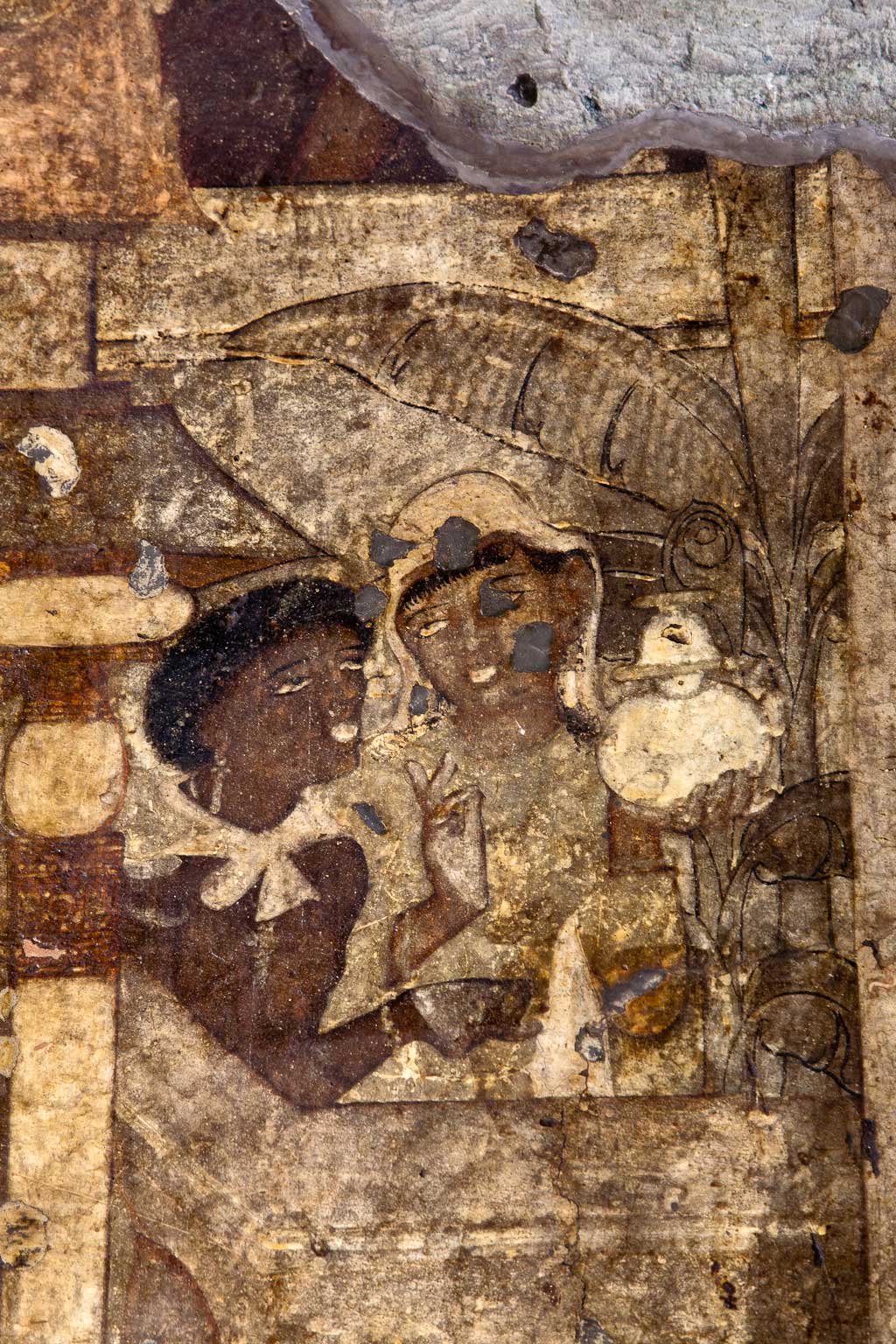Cave No. 16
Identification: episodes 7, 8, 10, 11 by Foucher (1921, narrative no. 55).—
After the enlightenment, on his first visit to the hometown of Kapilavastu, the Buddha convinced many to follow his doctrine.
His half-brother, Nanda, immersed in passion for his wife, Sundarī (Beauteous), missed that sermon. While the Buddha went from house to house for food, Nanda spent time with Sundarī, helping her with her make-up and holding the mirror for her. When the Buddha reached the palace, he went unnoticed as Nanda and Sundarī were busy in the make-up room. So, the Buddha quietly left. When a lady saw him and informed the prince, Nanda left the house in a hurry to repair the damage and offer his respects to the Buddha. He saw the Buddha addressing many people in the street, surrounded by disciples.
Unable to go anywhere near him, Nanda decided to return home. However, after the crowd had dispersed, he managed to meet his brother alone in the street. The prince respectfully bowed and wanted to take his leave. The Buddha handed his food-bowl to him and Nanda had no choice but to carry it till the monastery. Once in the monastery, the Buddha convinced him about the virtues of a monastic life, to which Nanda halfheartedly agreed. He allowed his head to be shaved and dressed in a monk’s robe.
Meanwhile, Sundarī kept waiting for her husband. When a maid servant informed her about Nanda becoming a monk, she was engulfed in intense sorrow. Nanda too pined for his wife and thought about giving up the monastic life. When the Buddha came to know about Nanda’s distress, he flew him to heaven. He drew Nanda’s attention to a one-eyed female monkey in the Himalayas, to contrast her ugliness with his wife’s beauty. In Indra’s heaven, they met celestial nymphs who were far beauteous than Nanda’s wife. So, Nanda went back to his ascetic life to be reborn in Indra’s heaven. But the monk, Ānanda, convinced him about the importance of enlightenment over the heavenly sphere. After the Buddha’s teaching, he devoted his life to meditation and attained sainthood.
—Source: Singh 2019, 31-33; Schlingloff 2013, I, 415-416








